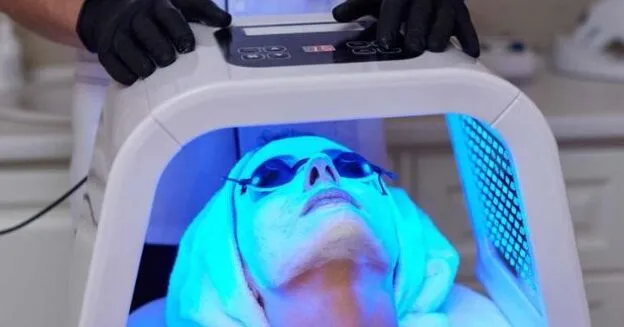Modern hospitals rely on innovative technologies to provide patients with safe, effective, and efficient treatments. Among these innovations, the advanced photo therapy light has become a vital medical device for treating conditions such as neonatal jaundice, chronic skin disorders, and certain mood-related health issues. With improved designs, higher efficiency, and advanced features, these devices are now an essential part of hospital equipment, ensuring patient safety and better recovery outcomes.
This article explores the importance of advanced photo therapy lights, their benefits, applications in hospitals, and the features that make them indispensable in modern healthcare.
What is an Advanced Photo Therapy Light?
An advanced photo therapy light is a medical-grade device that uses specific wavelengths of light to treat medical conditions. Unlike traditional therapy units, advanced models are designed with improved LED technology, enhanced durability, energy efficiency, and multiple safety features.
In hospitals, photo therapy lights are mainly used for:
- Neonatal jaundice treatment in newborn babies.
- Skin care treatments such as psoriasis, eczema, and vitiligo.
- Wellness therapy, including mood regulation in seasonal affective disorder (SAD).
By delivering precise light wavelengths, these devices trigger biological processes in the body that help break down harmful substances like bilirubin or promote healing in skin tissues.
Importance of Photo Therapy Light in Hospitals
Hospitals must provide reliable and safe treatment options for both infants and adults. The advanced photo therapy light is essential for several reasons:
- High Patient Safety – Advanced devices meet international medical standards, ensuring safe exposure for patients of all ages.
- Effective Treatment – Delivers consistent wavelengths that guarantee reliable outcomes.
- Non-Invasive Care – Eliminates the need for medication or invasive procedures, making treatment stress-free.
- Cost-Efficient – Reduces hospitalization time and lowers overall healthcare costs.
- Versatility – Treats a wide range of conditions in both neonatal care and dermatology departments.
Applications of Advanced Photo Therapy Light in Hospitals
1. Neonatal Jaundice Treatment
Jaundice is one of the most common conditions affecting newborns. It occurs due to high levels of bilirubin, which can cause yellowing of the skin and eyes. In hospitals, advanced photo therapy lights are the first line of treatment.
- Blue spectrum light (430–490 nm) effectively breaks down bilirubin.
- Adjustable intensity ensures safe use for premature or sensitive babies.
- Portable designs allow treatment at the bedside or in neonatal intensive care units (NICUs).
2. Dermatology and Skin Care
Hospitals use advanced photo therapy lights in dermatology departments to treat chronic skin conditions:
- Psoriasis – Reduces scaling, redness, and itching.
- Eczema – Provides relief from dryness and irritation.
- Vitiligo – Stimulates repigmentation in affected areas.
- Acne – Blue light therapy targets bacteria that cause breakouts.
3. Mental Health Support
Some hospitals use photo therapy lights to treat patients with seasonal affective disorder (SAD) or circadian rhythm disturbances. Controlled light exposure helps regulate mood, improve sleep cycles, and boost mental well-being.
Features of Advanced Photo Therapy Lights
What sets advanced hospital-grade devices apart from basic models is their wide range of specialized features:
- LED Technology – Provides long-lasting, consistent, and energy-efficient lighting.
- Adjustable Intensity – Allows doctors to tailor therapy to each patient’s needs.
- Multiple Wavelengths – Supports different treatments, from neonatal care to dermatology.
- Digital Control Systems – Easy-to-use panels for precise treatment monitoring.
- Safety Mechanisms – Automatic shut-off, overheating protection, and certified safety standards.
- Portability – Mobile stands and lightweight design for easy movement within the hospital.
- Durability – Built with high-quality materials to withstand frequent hospital use.
Benefits of Using Advanced Photo Therapy Light in Hospitals
- Enhanced Patient Outcomes
Advanced technology ensures faster recovery and higher success rates. - Reduced Hospital Stay
By effectively lowering bilirubin or improving skin conditions quickly, patients spend less time admitted. - Comfort for Newborns and Adults
Non-invasive and painless treatments make therapy suitable for sensitive patients. - Operational Efficiency
Energy-efficient LEDs reduce electricity costs and minimize maintenance. - Trust and Reliability
Hospitals using advanced equipment gain patient trust, reinforcing their reputation for modern care.
Safety Guidelines in Hospitals
Hospitals must follow strict safety protocols when using advanced photo therapy lights:
- Eye Protection – Babies must wear protective eye shields.
- Hydration Monitoring – Babies undergoing jaundice treatment need frequent feeding.
- Controlled Exposure – Treatment sessions must follow medically approved time limits.
- Regular Maintenance – Equipment must be calibrated and serviced regularly for accuracy.
- Medical Supervision – All therapy must be conducted under the guidance of qualified staff.
Why Hospitals Prefer Advanced Models
Hospitals today prefer advanced photo therapy lights over traditional units because of their:
- Energy Efficiency – Lower operational costs.
- Long Lifespan – LED lights last much longer than fluorescent tubes.
- Consistent Output – Reliable treatment without fluctuations in intensity.
- Ease of Use – Digital panels simplify operation for medical staff.
- Compact Design – Saves space in busy hospital environments.
Buying Considerations for Hospitals
When hospitals invest in advanced photo therapy lights, they must consider the following:
- Medical Certification – Ensure compliance with international safety standards.
- Technology – Prefer LED-based devices for efficiency and durability.
- Treatment Range – Select models that support multiple medical applications.
- Ease of Maintenance – Equipment should be easy to clean, service, and repair.
- Warranty and Support – Manufacturers should provide strong after-sales support.
Future of Photo Therapy Lights in Hospitals
The future of advanced photo therapy lights looks promising, with innovations such as:
- Smart Monitoring Systems – Integration with hospital management software.
- AI-Based Adjustments – Automatically adapting intensity based on patient condition.
- Eco-Friendly Models – Even more energy-efficient and sustainable designs.
- Portable and Home-Hospital Integration – Allowing patients to continue treatment safely outside hospitals.
Conclusion
The advanced photo therapy light is a cornerstone of modern hospital care. From treating newborn jaundice to managing chronic skin conditions and supporting mental health, it provides safe, effective, and reliable therapy. Its advanced features such as LED technology, digital controls, and safety certifications make it indispensable in neonatal units, dermatology wards, and beyond.
Hospitals that invest in advanced photo therapy lights not only enhance patient outcomes but also improve efficiency, reduce costs, and build trust with families. As technology continues to evolve, these devices will remain essential in delivering high-quality healthcare for patients of all ages.






